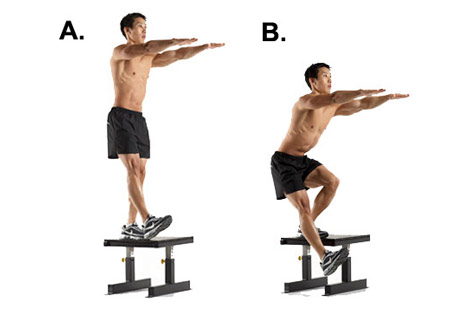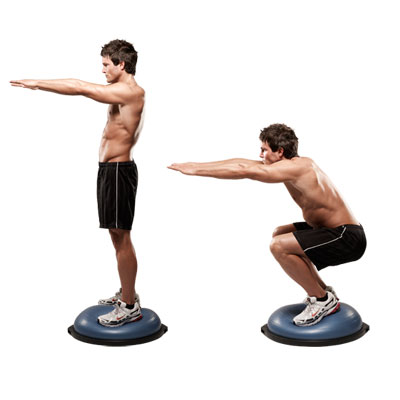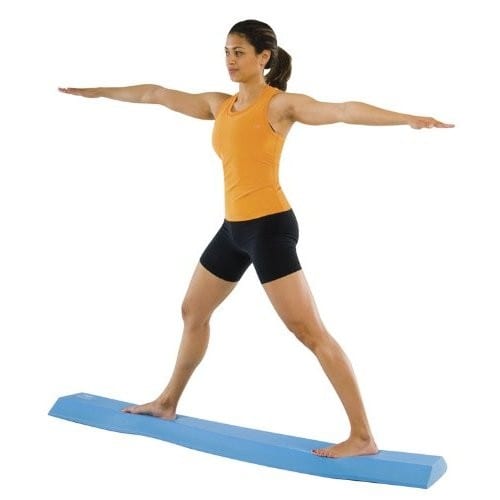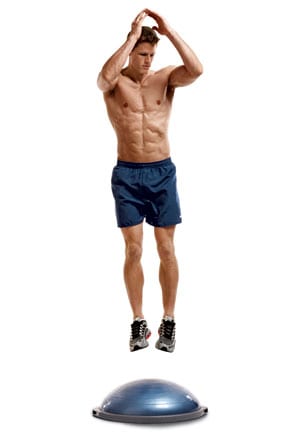By the healthiergang writer , coach
Exercises For Balance
Whether you are a running, trail, obstacle racing athlete or a simple person who loves jogging, balance turns out to be a fundamental component of training.
Particularly overlooked by most athletes because it is considered "uninteresting" or because it is underestimated, he is often reinstated following accidents.
Balance is part of motor skills, which like all human abilities, are not innate, but yes they develop on the basis of elementary skills, in the confrontation between man and the environment. Motor skills are divided into two large groups: conditional skills e coordination skills.
Equilibrium: a Coordinating Capacity
Balance is a coordinating ability.
Coordination skills are those factors that they affect performance and can be improved, educated, transformed and maintained through various forms of movement.
The coordination skills they refer primarily to the processes of regulation and control of movement. They are essential prerequisites for carrying out a whole group of motor activities, for the development of motor coordination and various forms of sporting movements.
The development of coordination skills is strictly dependent on the nervous system, particularly:
- from the perceptual apparatus (sight, hearing, touch);
- from the sensorimotor apparatus (balance, perception of space, e
weather);
- from the expressive capacity (body languages).
But why is balance training, also known as proprioceptive, so important?
Proprioceptive Training
Proprioceptive training is the set of exercises that create situations of instability in order to use proprioceptive signals coming from one's body to respond and maintain a situation of balance.
The purpose of this training is those of improve posture and control of your body in space in order to change when appropriate situations arise.
This type of exercise is particularly suitable for all athletes who practice a sport with changes of direction, jumps or on highly unstable terrain like mud and rocks.
The exercises therefore are aimed at creating conditions of instability in such a way as to recall the stimulus of proprioceptive reflexes based on proprioceptive receptors located inside your body.
How therefore this typology is essential for classic athletes, even more fundamental is for Obstacle racing athletes, which are constantly faced with particularly difficult terrain, from mud to snow, from large rocks to small stones, from meadows to very hard soils.
Injuries to the joints, above all ankles, are now very common and with this, inserting proprioceptive exercises daily can help improve the health of our joints and consequently the performances.
In many competitions there are also specific exercises on balance such as the crossing of beams or the passage over various wooden logs.
So how do you train your balance?
Before that it should be noted that they exist various types of balance:
2. Dynamic equilibrium
3. Balance in flight.
1. Static equilibrium
In it there is no displacement of the center of gravity (if not angular displacements). It is result of an intense work of the vestibular systems and a myriad of sensory information: visual, tactile, auditory and proprioceptive which, reaching the brain and acting on the postural muscles, give rise to an optimal search for verticality.
In the age group from 5 to 6 years, children lack a good posture tone so this form of balance is difficult for them.
2. Dynamic Balance
There is a shift in the center of gravity, and almost all the work is donated to antigravity muscles, which appear as servomechanisms regulated by the vestibular apparatus.
Between 5 and 12 - 14 years there are the conditions for the greatest plasticity of the nervous system and these mechanisms are susceptible to a notable refinement. Here because when you are a child you are particularly predisposed to learn dynamic balance exercises.
3. Flight Balance
It is the search for balance and postural control during an aerial phase. The major analyzers that help the subject in this search for balance are mainly the vestibular analyzer and the optical analyzer.
The body is not resting on the ground and consequently the proprioceptive information is limited. The vestibular optic analyzers favor postural adjustment which is a primary condition for the control of the body in relation to the subsequent phases of arrival and support.
Training Balance
To train the balance we are going to use our body first, to which we add small tools that create instability such as bosu o skimmy.
1. We can start by keeping the balance on one foot and performing flexion-extension exercises of the lower limb.

2. Later we can go and perform the exercises on an unstable basis such as one proprioceptive table o un bosu, on which you can try to maintain a static position or dynamically perform exercises such as squats and lunges.

3. From the first stable exercises it becomes essential to add dynamic exercises such as the passage on the beam, the passage from small tools (you can also use small weight discs as a support base) up to perform the steps in more types of support.

4. We can then conclude with flight exercises, like jumps with landing on a trampoline or on an unstable base such as on a bosu.

The possibilities of proprioception training they are infinite according to their available tools and their will.
Good workout!


























